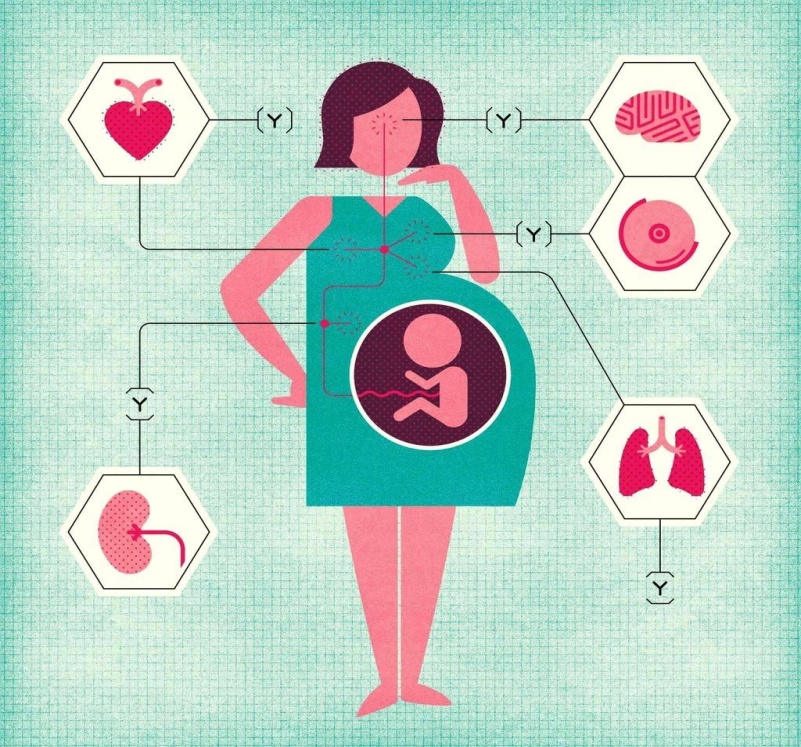Mother and child start talking with each other through a silent chemical conversation throughout the pregnancy by transferring cells from mother to child and also from child to mother. Fetomaternal Microchimerism is a condition of a process in which when a mother is pregnant, some of her child’s cells can be transferred through the placenta to the mother’s body. These cells include immune lineage, Mesenchymal stem cells, and some immune cells. These cells have differentiation potential and often contain the features of a progenitor. That’s the reason these cells are called pregnancy-associated progenitor cells (PAPC).
The transfer of one fetal cell to another can start during the fourth or fifth week after fertilization, and this process continues during the pregnancy period. These cells can be alive for a long time, up to 30 days after giving birth to a child, and often even more and can integrate into the mother’s organ. These cells can be detected in postpartum bloodstream of mother.
Effects of Fetal Microchimerism upon mother:
This includes both positive and negative effects. Mothers benefit more from or are harmed by these fetal cells.
Positive Effect:
- These fetal cells provide signals to the mother and manipulate her physiological constituents to produce nutrients such as milk. They often enhance production by differentiating them into breast cells.
- These cells keep their role in maternal wound healing and feel like a very, very tiny part of a child taking care of its mother.
- These cells make a signal to the mother’s brain to increase oxytocin and prolactin production.
- These fetal cells give a signal to increase the mother’s body temperature, and that is transmitted to the infant.

Negative Effect:
- Scientists hypothesize that the interaction between child and mother through these fetal cells can be the reason for the mother’s risk of cancer and rheumatoid arthritis even many years after she has given birth.
- Some autoimmune diseases can also affect the mother.
- Preeclampsia can be another negative effect of these fetal cells during pregnancy (usually at twenty weeks after conception).
Fetal Microchimerism in some prenatal diagnosis:
- As some fetal cells transfer to the mother through the placenta and travel through the bloodstream, blood samples are taken from the mother to perform noninvasive prenatal paternity testing. The Baby’s father can be identified by STRs and DNA typing with suspected samples before its birth.
- Moreover, diagnosis of aneuploidy and other genetic disorders can be detected before birth. In this case, karyotypic analysis and Y-chromosome detection are conducted in lymphocytes in maternal circulation
Mohua Sarker
Genetic Engineering & Biotechnology,
Jagannath University, Dhaka.
References:
- https://www.ncbi.nlm.nih.gov/pmc/articles/PMC6714269/?fbclid=IwAR1VnoVndPaeyYp9WBub-dR4_6CxWmawFGnVTaUxTKX95HDjq0uZf5MdSjY
- https://www.ncbi.nlm.nih.gov/pmc/articles/PMC2887685/?fbclid=IwAR2jKf3qNKIO5vE73VkaDS6VqSdorC-nsr19GaBMwG2XdjGKXgFzkGj6cZU
- https://www.ncbi.nlm.nih.gov/pmc/articles/PMC4712643/?fbclid=IwAR38QPVWr1bPALcuqe3CfYQsVlZxQiHqsAy4QOYENRQv1bONLwhGAXMl6dA











Leave feedback about this